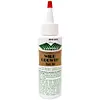What's inside
What's inside
 Key Ingredients
Key Ingredients

 Benefits
Benefits

 Concerns
Concerns

 Ingredients Side-by-side
Ingredients Side-by-side

Glycine Soja Oil
EmollientRicinus Communis Seed Oil
MaskingRosmarinus Officinalis Leaf Oil
MaskingSimmondsia Chinensis Seed Oil
EmollientMentha Piperita Oil
MaskingEucalyptus Globulus Leaf Oil
PerfumingMenthol
MaskingMelaleuca Alternifolia Leaf Oil
AntioxidantCocos Nucifera Oil
MaskingEquisetum Arvense Extract
AstringentAloe Barbadensis Extract
Skin ConditioningLavandula Angustifolia Oil
MaskingTriticum Vulgare Germ Oil
EmollientCarthamus Tinctorius Seed Oil
MaskingOenothera Biennis Oil
EmollientVitis Vinifera Seed Oil
EmollientBenzyl Nicotinate
Skin ConditioningPrunus Amygdalus Dulcis Oil
Skin ConditioningOryza Sativa Bran Oil
EmollientTocopheryl Acetate
AntioxidantBiotin
AntiseborrhoeicArctium Lappa Root Extract
Skin ConditioningGlycerin
HumectantApium Graveolens Seed Extract
AntioxidantRetinyl Palmitate
Skin ConditioningCholecalciferol
Ascorbic Acid
AntioxidantOcimum Basilicum Oil
MaskingPogostemon Cablin Leaf Oil
MaskingSalvia Officinalis Oil
MaskingSilica
AbrasiveUrtica Dioica Extract
AstringentGlycine Soja Oil, Ricinus Communis Seed Oil, Rosmarinus Officinalis Leaf Oil, Simmondsia Chinensis Seed Oil, Mentha Piperita Oil, Eucalyptus Globulus Leaf Oil, Menthol, Melaleuca Alternifolia Leaf Oil, Cocos Nucifera Oil, Equisetum Arvense Extract, Aloe Barbadensis Extract, Lavandula Angustifolia Oil, Triticum Vulgare Germ Oil, Carthamus Tinctorius Seed Oil, Oenothera Biennis Oil, Vitis Vinifera Seed Oil, Benzyl Nicotinate, Prunus Amygdalus Dulcis Oil, Oryza Sativa Bran Oil, Tocopheryl Acetate, Biotin, Arctium Lappa Root Extract, Glycerin, Apium Graveolens Seed Extract, Retinyl Palmitate, Cholecalciferol, Ascorbic Acid, Ocimum Basilicum Oil, Pogostemon Cablin Leaf Oil, Salvia Officinalis Oil, Silica, Urtica Dioica Extract
Cocos Nucifera Oil
MaskingOlea Europaea Fruit Oil
MaskingSimmondsia Chinensis Seed Oil
EmollientRice Bran Acid
CleansingTheobroma Cacao Fruit Powder
Skin ConditioningMalpighia Emarginata Seed Extract
Skin ConditioningPunica Granatum Seed Powder
AbrasiveRosa Canina Fruit Extract
AstringentCucurbita Pepo Seed Oil
EmollientTremella Fuciformis Extract
HumectantCicer Arietinum Seed Powder
AbrasiveSesamum Indicum Seed
AbrasiveSalvia Sclarea Oil
MaskingEucalyptol
PerfumingBoswellia Carterii Oil
MaskingPelargonium Graveolens Oil
MaskingHydrolyzed Grape Fruit
AstringentCocos Nucifera Oil, Olea Europaea Fruit Oil, Simmondsia Chinensis Seed Oil, Rice Bran Acid, Theobroma Cacao Fruit Powder, Malpighia Emarginata Seed Extract, Punica Granatum Seed Powder, Rosa Canina Fruit Extract, Cucurbita Pepo Seed Oil, Tremella Fuciformis Extract, Cicer Arietinum Seed Powder, Sesamum Indicum Seed, Salvia Sclarea Oil, Eucalyptol, Boswellia Carterii Oil, Pelargonium Graveolens Oil, Hydrolyzed Grape Fruit
 Reviews
Reviews

Ingredients Explained
These ingredients are found in both products.
Ingredients higher up in an ingredient list are typically present in a larger amount.
Cocos Nucifera Oil is obtained from the kernels of the coconut fruit. In other words, this is coconut oil.
Coconut Oil is rich in fatty acids with lauric acid making up the majority of these. It also contains linoleic acid. Due to this high fatty acid content, coconut oil helps trap moisture and soften skin.
Despite being antibacterial, coconut oil may not be great for acne-prone skin. It is comedogenic and may clog pores. This ingredient may not be safe for malassezia or fungal acne.
Note: Coconut Oil should not replace your sunscreen for UV protection. Studies show it only blocks about 20% of UV.
This oil is non-volatile and has a light scent.
The term 'fragrance' is not regulated in many countries. In many cases, it is up to the brand to define this term. For instance, many brands choose to label themselves as "fragrance-free" because they are not using synthetic fragrances. However, their products may still contain ingredients such as essential oils that are considered a fragrance.
Learn more about Cocos Nucifera OilThis oil comes from the seeds of the desert shrub called Jojoba. It is more commonly known as jojoba oil, a non-comedogenic oil.
Jojoba oil does not contain fragrance and has many fatty-acids, making it a great soothing ingredient.
It also contains Vitamin E, a great moisturizing ingredient. Vitamin E is also an antioxidant and protects your skin against oxidative damage.
This ingredient humectant properties, meaning it helps draw moisture from the air. This helps keep your skin hydrated.
While jojoba has antibacterial properties, it is only able to kill some strains of bacteria.
Studies also show it helps in wound healing. In fact, Indigenous cultures have used jojoba as a moisturizer and to help treat burns for centuries.
Fun fact: Jojoba oil similar to natural human skin sebum, so it has a great effect on dry skin. It is also promising with helping to regulate sebum production.
Due to its fatty acid content, Jojoba oil may not be fungal acne safe. We recommend speaking with a professional if you have any concerns.
Learn more about Simmondsia Chinensis Seed Oil